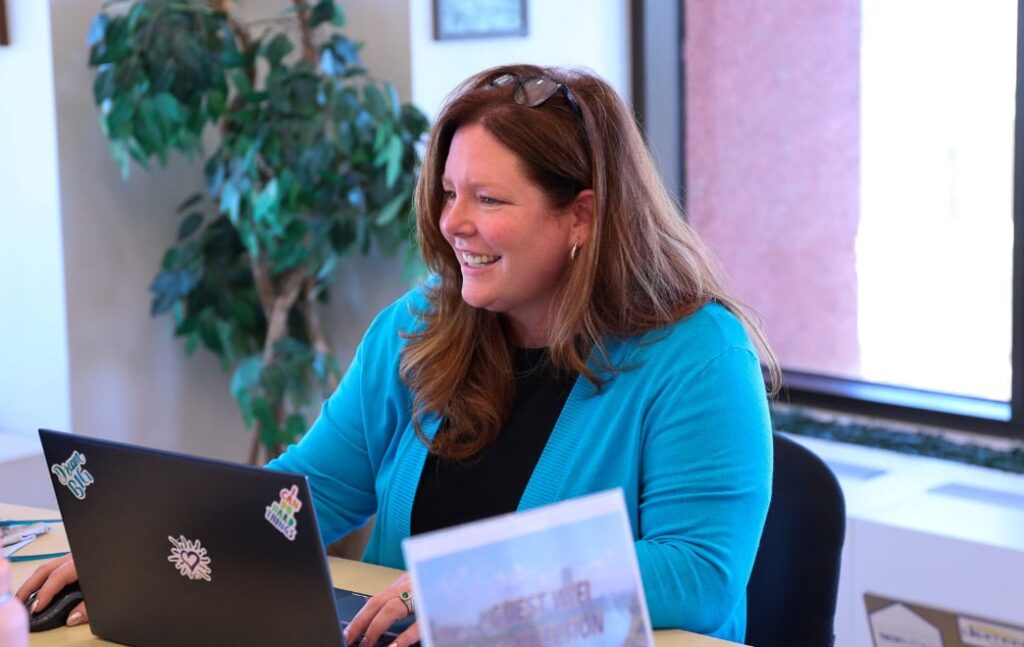Hiring talent is becoming harder every year. What steps are you taking to retain the best people?
Contract staffing is a popular strategy to maintain labor flexibility and access unique skill sets. It can also give you a short-term trial with someone that could make an excellent long-term employee.
In the best cases, recruiting a consultant is a precursor to hiring your next valuable full-time employee!
Whether you’re considering hiring a consultant to support your team, or you have one you’re ready to bring on full-time, you’ve found the right place to answer your questions! Let’s dive in.
The 101’s of Contract Staffing
In the right instances, contract staffing can be a beneficial alternative to direct hire staffing!
Why do companies hire contract staff? Depending on your needs, operations, and the requirements of the work to be done, here’s why you might consider hiring on a contract basis:
- Flexibility: The largest benefit of contract staffing is being able to scale your team size up and down without the commitment to full-time employees. Companies with large-scale projects will bring in contract employees to augment their full-time staff. In some instances, a project runs longer than expected. There is flexibility in a contract to allow for extensions as further needs arise.
- Cost savings: With contract staffing, administrative and payroll costs are retained by a third-party staffing partner. This eliminates the cost of benefits provided by you to a full-time employee.
- Specialized skills: Contract employees often bring specialized skills to a project that the existing team may not possess. This is why contract staffing is common for technology roles, especially for software engineers and developers with deep expertise in niche skillsets and technologies.
Want to learn more about how we approach contract staffing solutions at Lighthouse? Head to our Live With Lighthouse podcast episode, where I talked about my background working with hiring teams, helping them define requirements and identify the best talent for their unique needs.
Build a Positive Contract Employee Experience
With the basics out of the way, let’s talk about what happens after you bring a contract employee onto your team!
How do you craft a positive experience and help that individual develop and integrate into your team? Creating a desire for excellent consultants to join as full-time employees can impact the success of your whole team.
Offer Clear Communication
As the manager overseeing a consultant, open lines of communication through onboarding and the opening weeks on the job as your employee are critical.
Identify where you can build transparency around project goals, individual roles and how the consultant will contribute, along with expectations for how work gets done.
This not only sets the stage for a successful partnership but also builds trust and respect. Remember, clarity is key to preventing misunderstandings and ensuring that everyone is on the same page.
Check out this video from Claire Stroh with more tips for positive new hire communication!
Provide Resources and Support
Once a standard of clear communication and expectations is set, and the work begins for your consultant, do they know where to seek out resources and support?
Remember: as a contract employee, they may not have access to the same resources and processes as your internal team.
They should understand their role clearly – and should have the expertise necessary to start making an immediate contribution – but the need for support and additional resources will likely arise at some point. Make sure they’re prepared and know who to ask questions and where to look if needed. This is a small but helpful aspect to make the consultant feel like part of the team!
As a manager, make sure the consultant has what they need to do their best work, whether it’s mentoring, training opportunities, access to internal networks, guidance on navigating company culture and dynamics, or even something as small as finding their way around the office.
Share Recognition and Feedback
Acknowledge the consultant’s expertise and contributions during their consulting tenure. Not only will it help them feel more connected to the work, it’s also an opportunity to connect them to the broader team and to the company’s mission and vision!
Valuing their expertise not only fosters a sense of appreciation but also encourages them to continue making valuable contributions as full-time employees.
Our Claire Shares series with Claire Stroh also has a detailed explainer video on establishing a recognition system that includes day-to-day, informal, and formal recognition.
From the consultant’s perspective, there are several things that can be done to make this a positive experience as well. As a manager, how can you help your consultant…
- Understand the Company Culture? Make sure the employee aligns with and understands the company’s values, mission, and culture. Are there opportunities for them to attend company events and interact with full-time employees outside of their work? This will help them align their mindset and work approach with the company’s expectations, setting the stage for a smoother transition.
- Build Relationships? Meaningful connections with colleagues and team members go a long way towards improving employee engagement. A consultant that can build rapport with their potential future peers will likely have higher job satisfaction and productivity, which can improve your business case as a manager for converting that consultant to a full-time employee.
- Solicit Feedback? Does the consultant have the opportunity to hear your feedback and provide their own to you in return? A culture of proactive feedback that is supportive and candid will make a positive experience for the consultant during their contract term. If they can better understand their strengths, areas for improvement, and how their work aligns with the company’s objectives, that will set the stage for continued development as a potential full-time employee.
Making the Conversion from Consultant to Full-Time Employee
After a positive contract experience, it’s not uncommon for consultants to transition into full-time employees within the organizations they support. This shift offers benefits for both the consultant and the hiring manager. It’s a great way to ensure continuity, stability, and a deeper integration into the company’s culture and mission. However, this transition requires careful planning and execution to ensure a smooth and successful integration.
Here are the key steps for transitioning a consultant to a full-time employee, from both the consultant’s and the hiring manager’s perspectives:
Clarify Expectations
Continue engaging in open communication regarding the transition to a full-time role. This process has a number of steps and you may want to start that conversation 1-2 months before the expected end date of the contract.
Clarifying expectations encapsulates everything from the employees’ new and continued responsibilities, performance metrics, and career progression within the organization.
This is also a time where salary and benefits will have to be negotiated – an important, but stressful conversation. If you haven’t converted an employee before as a manager, do your research on how to calculate the conversion from a consultant’s rate to a full-time employee’s salary.
As at the start of the contract, understanding what is expected from the outset after the conversion will enable both the new employee and the rest of the team to hit the ground running on future projects!
Prepare for the Transition
What proactive steps can be taken to prepare for this transition to a full-time employee?
For the consultant, this may include updating your resume, completing any necessary paperwork or onboarding requirements, and familiarizing yourself with company policies and procedures.
For the manager supervising the consultant, this means communicating effectively with your internal talent acquisition team and/or an external partner that manages the consultant’s employment status.
Facilitate the Integration
Think about when a pro sports team makes a big acquisition in a trade or in free agency. How is that new player welcomed to the club? How can you make this transition a positive experience by integrating your new full-time employee further into your team?
Encourage other full-time team members to welcome and collaborate with the new employee. Assign them meaningful projects and provide opportunities for them to showcase their abilities – especially those that might have been outside the parameters of their previous contract.
Fostering a supportive and inclusive environment helps all employees feel valued and empowered. This becomes even more important for new hires.
Continue Providing Growth Opportunities
Where can you offer opportunities for professional growth and development to the new full-time employee? Perhaps they’ll have access to new development programs or resource groups that aren’t available to consultants.
If you’ve invested the time to integrate them as a consultant and taken the time in this process to bring them in full-time, your involvement in their ongoing development is key. Not only will this enhance their skills and capabilities, it also increases their long-term commitment and connection with the organization.
Ready to Explore Contract Staffing Further?
Transitioning a consultant to a full-time employee requires careful planning, effective communication, and mutual support from both the consultant and the hiring manager. By following these key steps and fostering a collaborative and supportive environment, organizations can ensure a smooth and successful transition that benefits both parties involved.
Does this contract-to-hire route interest you, hiring a consultant with the opportunity to convert? We’d love to chat!
Lighthouse Technology Services provides contract, contract-to-hire, and direct-hire talent acquisition services, and with a 20-year track record of success, we want to help you find the right talent for your team. Learn more about our approach, and reach out if you want to connect with one of our team members.





